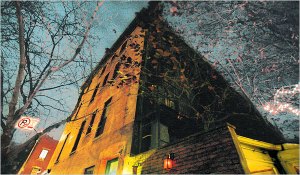Posted in Georgia, writers on January 19, 2010|
Leave a Comment »

Clayton, Ga.
Lillian Smith home
383 Hershey Lane
This was the home of writer Lillian Smith (1897-1966), best remembered for her groundbreaking first novel, Strange Fruit (1944). Though it sounds like pulp fiction with homosexuality as its theme, Strange Fruit was actually a tale of miscegenation, which was turned down by seven publishers before eventually reaching print. The novel was banned in cities like Detroit and Boston for its realistic treatment of the controversial theme. Despite that (or more likely because of it), the book was a runaway best-seller, which sold three million copies and was translated into 16 languages.
Smith was a white woman with a lifelong interest in racial issues. When she was growing up in Jasper, Fla., her parents took in a foster child they believed to be a white orphan, only to find out she was part black. The girl was immediately sent away, and the cruel incident left a lasting impression on young Lillian. Besides Strange Fruit (in which Jasper was thinly disguised as Maxwell, Ga.), Smith published five nonfiction books on the topic of racial justice, and numerous articles in Redbook, The Saturday Review, and The Nation.
The Smith family moved from Jasper to Clayton in northern Georgia in 1915. Smith met her life partner, Paula Snelling, when the two helped run the Smith family’s summer camp, Laurel Falls Camp for Girls, on top of Old Screamer Mountain. Beginning in the 1930s, the two women collaborated to publish a magazine called Pseudopathia, devoted to reviewing literary works by African Americans.
Today, the home where Smith did much of her writing is the Lillian E. Smith Center for Creative Arts, a compound of several cottages that accepts writers, artists, and other creative types for retreats at a small weekly fee. The center is run by Smith’s niece, a former professional dancer.
Read Full Post »







You must be logged in to post a comment.